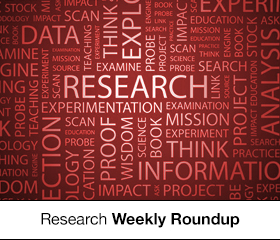Publishers See Rise in Programmatic Partnerships; Brands Need to Leverage FOMO
by Hugh Williams on 8th Sep 2016 in News


ExchangeWire Research’s weekly roundup brings you up-to-date research findings from around the world, with additional insight provided by Rebecca Muir, head of research and analysis, ExchangeWire. In this week’s edition: Publishers see rise in programmatic partnerships; Brands need to leverage FOMO; Snapchat gaining larger social ad spend.
Publishers see rise in programmatic partnerships
Around two-thirds (60%) of publishers expect the number of programmatic partnerships to rise in 2016, according to new research by the Association for Online Publishing. Within this, 80% believe data monetisation is a key area when looking to expand current business activity. As a result, increased investment in marketing automation is anticipated by 50% of publishers.
To account for this, two-fifths (40%) of publishers are increasing staff numbers within database and data analysis. This coincides with the increase in the proportion of sales staff who are automated trading specialists, which increased from 8% in 2015, to 14% in 2016.
The study also finds that, aside from data management, wider online advertising will play an increasing part in business activity going forward. Almost half of respondents (45%) highlight social media and video desktop as two other areas that will see heavy development.
In terms of digital audience, every respondent (100%) reports an increase in their smartphone audience over the past 12 months, with three-fifths (60%) experiencing a ‘major increase’. An increase in tablet audience was experienced by seven-in-ten respondents (70%). Desktop audience increased according to a third of participants (35%), but decreased according to the same number (35%) – a clear demonstration of the general migration of audiences to mobile. The largest source of digital audience in 2015 was search, at 36%, followed by direct traffic at 31%.
Brands need to leverage FOMO
Brits are 39% more likely to engage with brand messages via email that play on their fear of missing out (FOMO), suggests research by Mailjet. This tactic connects consumers with the fact the brand has offers that "they don’t want to miss".
The study looks at the effect schadenfreude, or ‘fail’ content, has on engagement. However, this is less successful than FOMO offers, and only produced an 8% boost among Brits. Although this strategy does boost open rates, it highlights a lack of engagement with third-party content. Mailjet also find that 18% are more likely to open an email with a swear word in the subject line.
However, these figures are totally different globally. US consumers are no more likely to open an email focussing on consumer FOMO, or which uses schadenfreude, while the French are 9% less likely to engage with this. On the other hand, the Spanish are 59% more likely to open an email that plays on their FOMO.
All of this highlights the importance of taking into account cultural variations when planning marketing campaigns. Josie Scotchmer, UK marketing manager at Mailjet comments: "Yes brand consistency continues to be of the utmost importance; but, as marketers, when it comes to engaging new and existing markets, deferring to local expertise, and setting the right systems and processes to capitalise on these opportunities, is key."
Snapchat gaining larger social ad spend
Snapchat will capture 2% of social network ad dollars in the US next year. This is according to eMarketer, which has just released its first-ever global Snapchat ad forecast. This will take the platform to nearly USD$1bn (£750m) in ad dollars. Despite Snapchat commanding a 32% share of the social network market in the US, it is competing for ad dollars with more established players such as Facebook and Twitter.
At present, Snapchat’s ‘Discover’ feature accounts for the largest share of its ad revenues – at 43%. However, this balance is predicted to shift over the coming years towards its newest feature, ‘Stories’. It is predicted that this will generate 38% of the company’s ad business next year. This year, overall ad revenue was USD$366.69m (£273.75m). This figure is predicted to rise to USD$935.46m (£698.37m) in 2017, and USD$1.76bn (£1.31bn) in 2018.
Snapchat currently derives 95% of its ad revenue from the US. However, as it begins to monetise users in other countries, such as UK, the non-US share of its ad revenues will grow. By 2018, a quarter of its ad revenue will come from outside the US.
Growth of outstream video
Two-thirds (66%) of brand professionals feel that outstream video will grow significantly over the next two years, Teads’ newest research ‘Outstream: The New Wave of Advertising’ finds. Over three-quarters (77%) of those investing more in digital next year share this belief.
Outstream video has a higher awareness with those considering investing in digital, too. While 59% of total brand media professionals have heard of the format, 74% of the group who are looking to boost digital investment are aware of outstream. Its increasing popularity is highlighted by the fact 63% of brand media professionals only heard of outstream in the last year.
The study finds campaign benefits to outstream video over instream, include the fact that it drives greater brand awareness (43% compared to 34% for instream). It has a 26% effectiveness of targeting key consumers, in comparison to 20% for instream. These stats bode well, with over two-thirds (69%) of brand professionals saying their digital budget will increase by over USD$10m in 2017. Almost two-thirds (60%) of brand professionals at companies increasing their digital budgets in 2017 agree that outstream is better optimised for mobile than instream video ads.
DMPMedia SpendMobileProgrammaticSnapchatVideo








Follow ExchangeWire